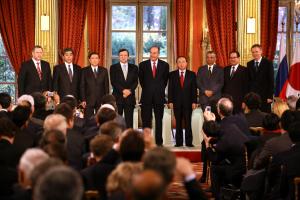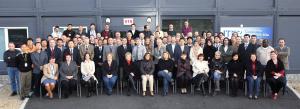10 years ago: the agreement that established ITER
ITER was born twice—once in 1985 in Geneva as an aspiration, and a second time ten years ago today (21 November 2006) by way of an international agreement signed in Paris to establish "the ITER International Fusion Energy Organization for the Joint Implementation of the ITER Project."
The project has come a long and hard way since the Geneva Summit, during which President Reagan and General Secretary Gorbachev advocated for "the widest practicable development of international cooperation" in obtaining fusion energy "for the benefit of all mankind."
The President of the European Commission, José Manuel Barroso, expressed his desire "to see ITER succeed in bringing to our societies progress and benefits currently beyond measure: the possibility of exploiting a new source of energy respecting of the environment and virtually inexhaustible."¹



